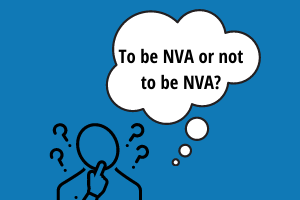Non-value-added activities (or wastes) are the roots of inefficiency in an organization. It’s important to enhance value for every step of a process. However, this does not always happen. We can classify non-value-added time into 3 categories. In Japan, these are called Muda, Mura, and Muri.
Muda
Muda is also known as ‘waste’. There are 8 types of waste:
- Excess Transport – This occurs when a material is moved unnecessarily from one place to another.
- Surplus Inventory – It involves the storage of material in quantities that are more than necessary.
- Excess Motion – This occurs in unergonomic workplaces.
- Waiting – Once could have to wait for a decision, information, machine breakdown, changeover, etc.
- Over-processing – It involves unnecessary operations.
- Overproduction – This happens when one produces more than what the next step can handle.
- Defects – Defects are when a material is not produced right the first time.
- Intellectual waste – It involves not using human potential.

Mura
Mura is also known as ‘variation’. Hence, it refers to variability in work methods or in the output of a machine’s capacity.
Muri
Muri refers to ‘irrationality’. It is the exertion and overworking of a person or machine. This is caused by either work overload or poor workplace design.
What challenges may I face while understanding Non-Value-Added Activities (NVA)?
- Firstly, everyone is used to seeing their process from their viewpoint. This prevents them from being able to identify an NVA time.
- Secondly, many assume that the moment a non-value-added activity is identified it should be removed.
- Thirdly, people perceive the removal of non-value-added activities as a threat to survival. They are daunted by the question, “what will I do if this activity is eliminated?”.

Here’s my advice:
Don’t push too hard to eliminate all NVA activities in one night! You need to understand that you cannot get rid of them all tomorrow! It is a journey and it will take time – sometimes even years.
The question is, “Do we embark on this journey to eliminate non-value-added activities?”. If yes, then let’s qualify a non-value-added activity based on these 3 questions:
(1) Is it a transformation step?
(2) Has it been done right, the first time?
(3) Will customers pay for it?
If you answer ‘no’ to any of these questions, it is a non-value-added activity. However, remember that identifying and removing non-value-added time is not a threat to survival! On the contrary, it will help you lay a solid foundation for survival.

Lean is an efficient way to curb non-value-added activities. Check out the steps by which you can implement Lean today!
